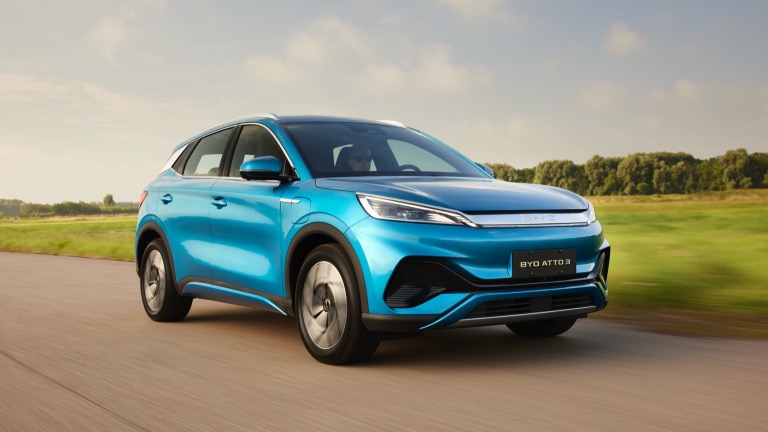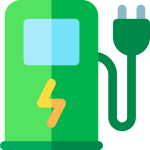
Origin Energy this week confirmed a vehicle-to-grid (V2G) pilot in partnership with BYD and charger supplier StarCharge. The program will select 50 participants to receive a subscription package that bundles a BYD Atto 3, a StarCharge V2G Halo bi‑directional charger and a dedicated energy tariff. The trial is scheduled to begin in January, and Origin is inviting interested customers to register now.
What Origin is testing
Under the subscription model, charging and discharging the vehicle’s battery would be part of the service. Origin has signalled the package price will sit around $800 a month. Origin’s e‑mobility general manager, Chau Le, said the immediate objective is to understand how drivers charge and use V2G-capable vehicles in real life, rather than to scale immediately to a commercial product.
“There’s real value in getting learnings from discharging and charging the vehicle but also understanding EV drivers’ charging behaviour,” Ms Le said. “Following the trial, we’ll be able to come up with what is the most attractive vehicle‑to‑grid program for EV drivers.”
Why V2G matters for Australia
Vehicle‑to‑grid technology enables electricity to flow both into and out of a vehicle battery: it charges the car and at other times exports electricity back to the home or the wider network. In theory, millions of EV batteries sitting idle could collectively act as a distributed energy resource – helping to smooth peaks in demand, deliver ancillary services to the National Electricity Market, and reduce the need for separate home battery installations.
For retailers, V2G is attractive because it represents a new source of flexibility. “Vehicle‑to‑grid is the Holy Grail for us as an energy retailer in the EV space,” Ms Le told AAP. “It unlocks a lot of value from allowing EV drivers to use their car as not just a car… but to be able to use it like a giant battery.”
Policy and industry context
The Origin pilot arrives as federal policy and industry standards nudge Australia towards faster EV uptake. Last year the federal government signalled a target that half of all new vehicle sales be electric by 2035 – a policy aim that strengthens the case for integrating EVs into energy system planning. Meanwhile, industry and standards bodies have been progressing V2G technical and safety standards so bi‑directional charging can be deployed at scale.
Research and earlier trials in Australia – including work by CSIRO and the Australian National University, and smaller commercial pilots – have already shown how V2G can work in practice. Early ARENA-supported studies demonstrated modest earning opportunities for participants who sold energy back to the grid during peak pricing events; one customer reportedly earned up to $250 in a limited trial. A modelling report for ARENA by Energeia suggested that under very optimistic assumptions, vehicle owners could make significant sums by selling power back to the grid – though real world returns will vary heavily with driving patterns, tariff design, and technical constraints.
Potential savings and real‑world limits
Origin has suggested an average driver covering around 12,000 km a year could save up to $2,500 a year on “fuel” or around $500 compared to conventional EV charging under its subscription assumptions. These headline figures are useful for illustration but come with caveats:
- Earnings from exporting electricity depend on tariff design, time-of-use prices and whether the retailer can dispatch stored energy at high‑value times.
- Frequent bi‑directional cycling may raise questions about battery degradation; manufacturers’ warranties, charging control algorithms and the depth-of-discharge strategies used by providers will shape actual impacts.
- Practical availability is constrained by driving needs: a car must be plugged in and have sufficient state of charge to export energy without interfering with the owner’s mobility requirements.
Technical, regulatory and consumer hurdles
V2G is technically mature in pilot settings but faces hurdles before wide commercial roll‑out:
- Vehicle and charger compatibility: Not every EV supports V2G. Bi‑directional chargers and vehicles require compatible hardware and communication protocols.
- Standards and certification: Australia has been working to adopt standards for safety, interconnection and communications. Regulatory clarity is crucial for insurers, warranty managers and network operators.
- Grid integration and market arrangements: Markets and network operators need clear rules for how V2G resources bid into frequency control, capacity markets and local network services.
- Consumer acceptance: Users need confidence the system won’t leave them with a flat battery, won’t void warranties, and will preserve battery health and privacy.
How Origin’s trial could help
The Origin subscription pilot is designed to shed light on many of these unknowns in a real‑world Australian context: how drivers actually charge; whether subscription customers accept export events; the financial mechanics of pooling exported energy; and how often exported energy is needed to provide value to the grid. Data from the trial can inform tariff design, consumer protections and commercial propositions that balance driver needs and system benefits.
Global context and lessons
International pilots – in Japan, Europe and North America – have demonstrated that V2G can deliver grid services such as frequency response and peak shaving. Those projects also underline the need for careful customer engagement, clear communication about battery warranty and degradation, and business models that fairly share value between EV owners and network or market participants.
What to watch next
- Results and learnings from Origin’s 50‑vehicle pilot: participation rates, user satisfaction, economics and battery health outcomes.
- Movement from pilots to scaled offerings: whether subscription models become a mainstream option or whether V2G is offered as a value add to EV owners with existing purchase or lease arrangements.
- Regulatory shifts: how networks, AEMO and other authorities adapt market rules to accommodate aggregated V2G resources.
- Manufacturer responses: whether OEMs broaden warranty coverage for V2G use and certify more models for bi‑directional charging.
Conclusion
Origin Energy’s BYD‑backed V2G subscription pilot is an important test case for how Australia might integrate millions of passenger EV batteries into a decarbonising electricity system. The program responds to broader policy signals pushing EV adoption and to an emerging technical standard framework. While the potential system and household benefits are clear, commercial viability will depend on tariff design, consumer confidence, technical interoperability and protections around battery health. The trial’s real value will be in the practical lessons it produces: how drivers use V2G in daily life, what incentives actually change behaviour, and how energy markets can fairly reward participants without compromising mobility.
How does vehicle‑to‑grid (V2G) work?
V2G uses a bi‑directional charger and compatible vehicle to allow electricity to flow both into and out of the car battery. When the car is parked and plugged in, energy can be exported to the home or the grid during high‑demand periods and imported again when prices are low.
Will using V2G damage my car battery or void the warranty?
Battery degradation is a valid concern. The impact depends on the depth and frequency of discharge cycles. Many trials use conservative charge/discharge strategies to limit degradation. Before joining any V2G program, check manufacturer warranty terms and the provider’s policies on battery health.
How much can I realistically earn from exporting electricity?
Earnings vary considerably with tariff structures, local electricity prices, how often the vehicle is available to export, and the services the vehicle provides. Pilot studies show modest earnings for typical users; modelling can suggest higher potentials but depends on optimistic assumptions.
Which cars support V2G?
Not all EVs support bi‑directional charging. Support depends on the vehicle’s onboard charger and the manufacturer’s software. Confirm compatibility with both the vehicle maker and the charger supplier before committing.
What will Origin learn from this trial?
Origin expects to learn about customer charging behaviour, the commercial attractiveness of different V2G offerings, technical performance (including impacts on battery health), and the practicalities of integrating vehicle batteries into energy services.
How do I register interest in Origin’s pilot?
Origin is inviting registrations of interest via its website. The company will select 50 participants for the pilot; prospective participants should review eligibility, location constraints and vehicle availability.
Could V2G help stabilise power prices or reduce blackouts?
Aggregated V2G resources can provide flexibility services that help manage peak demand and support system frequency – potentially reducing pressure on the grid. However, V2G is one of many tools (including static batteries, demand response and renewables) that collectively contribute to system reliability.
About EV Evolution
EV Evolution is the leading online platform dedicated to Australian electric vehicle owners and enthusiasts. We foster a vibrant community, delivering essential EV news and insights, and enhancing user engagement through our innovative, AI-powered chatbot for dynamic discussions. Our mission is to empower Australian electric vehicle owners and enthusiasts by fostering a vibrant, AI-driven online community that connects, informs, and advances the nation’s electric vehicle landscape.




